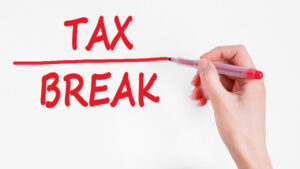
1. Making a budget
When most people think about budgeting they usually think they’re going to get shackled to it for a couple of months, if not years. But the truth is that it’s actually a tool for freedom, especially economic freedom.
Don’t start off by thinking about all the things you’re going to ‘miss out on’ and instead start by thinking of all the doors you can open for yourself in the future. If you’re also experiencing dread and stress near the end of the month then think of how great it’ll feel to alleviate those negative feelings.
Start by putting together a list of expenses. If you don’t know what you’re really spending money on and how then you can’t establish changes. This information shouldn’t be too difficult to get your hands on. Credit card bills and bank statements, that’s where you need to start. Who knows, you might reveal a few charges you weren’t expecting such as from subscriptions you’ve forgotten about.
Here are some items that might appear on your list, but keep in mind that everyone’s situation is different so you might be missing some points while gaining others.
- Average monthly income from pay stubs or bank account statements
- Child care, child support, or related family obligations
- Rent/mortgage, including home or renter’s insurance
- Utilities
- Monthly food expenses
- Credit card statements and debt
- Health care insurance premiums
- Car loans and additional expenses, including fuel, insurance, etc.
- Savings/investments, such as a 401(k), an IRA, or automatic savings deductions
- Additional transportation (excluding a car)
- Education loans
Of course add to this any personal expenses such as those related to sports, hobbies or just ‘fun’ money in general.
What does your list look like? Are your expenses close to outweighing your income? If it’s a really close call for this month then it’s likely that the same can be said about the following months- and that’s what we want to fix!
With all of that information in mind, it’s time to make a budgeting plan. Everyone’s plan will be different and if this is your first time creating one, don’t worry! The beauty about this part of regaining financial health is that it’s a work in progress and if you didn’t anticipate certain things early on, there’s still time to switch things around.
Now, don’t take this as an excuse to make sweeping changes to the detriment of your finances just because you miss your old lifestyle! We’re just saying that if you miscalculated anything it’s alright to go back and look over your plan again in order to fix it.
We recommend you start with the 50/30/20 budget plan! Keep in mind we’re only talking about your post-tax income right now.
Only 50% of your income should go towards essential spending including groceries, rent, mortgage, utilities, and health insurance. The nest 30% is reserved for discretionary spending. Here you should consider everything that you can cut out of your budget if you’re ever in an emergency such as memberships, subscription services, eating out, etc. The remaining 20% should go towards savings, everything from retirement savings to emergency accounts should be considered for this portion.
Starting with this budgeting plan can help shed some light on how you spend your money. You might not even realize how much you’re putting towards dining out, your hobbies, memberships, or subscriptions.
On the other hand, it could prove that despite heavy budgeting you can’t make the 20% mark for your savings if your rent is too high. In that case budgeting like this can make you start thinking about bigger life changes such as downsizing.
At the end of the day, it’s important to work with a plan that’s easy from the get-go. You don’t want to get involved in something too difficult that will make you call it quits too soon.





























































